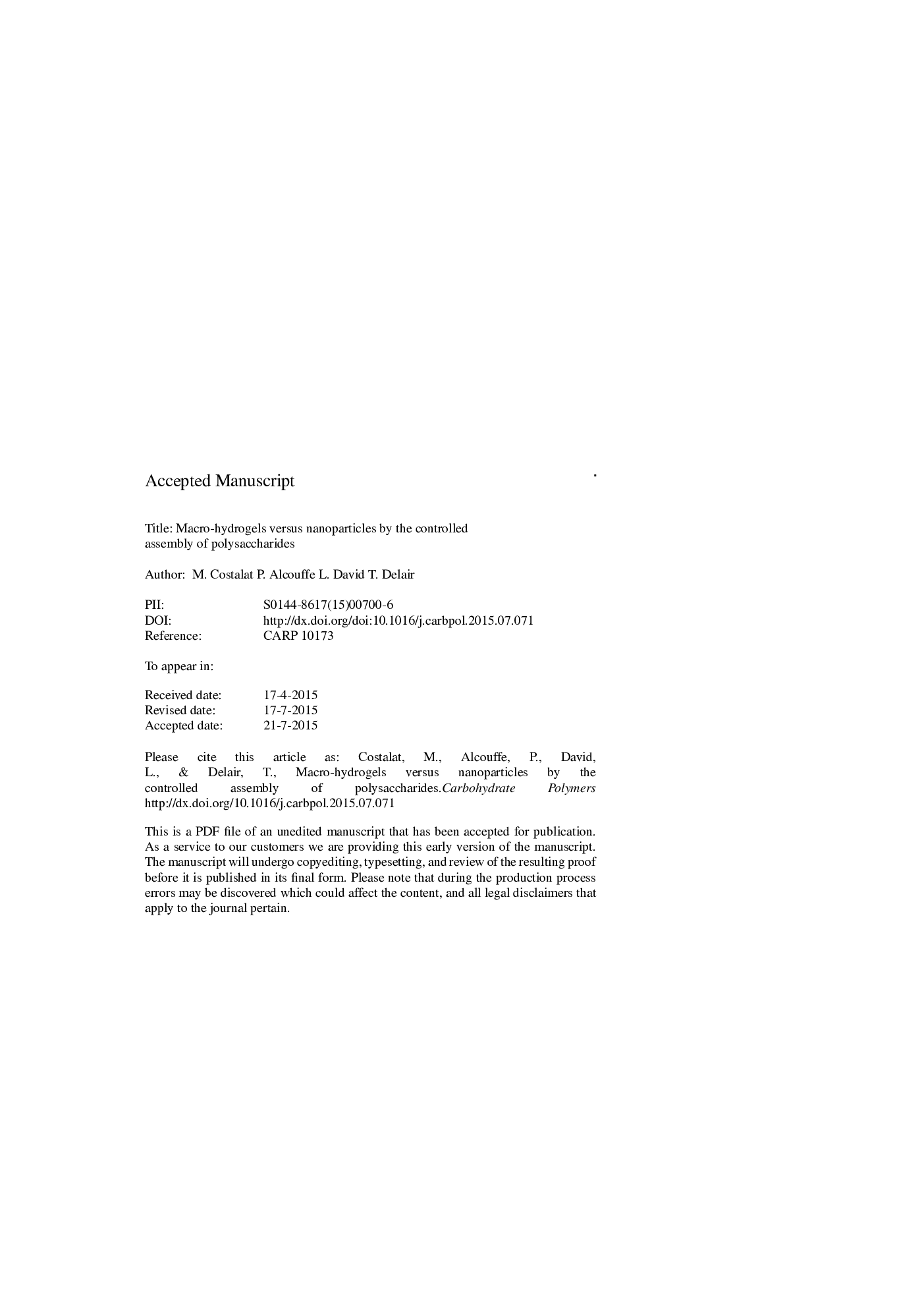| Article ID | Journal | Published Year | Pages | File Type |
|---|---|---|---|---|
| 7787183 | Carbohydrate Polymers | 2015 | 19 Pages |
Abstract
The controlled assembly of oppositely charged chitosan (CS, Mwâ¼33 Ã 103 to 600 Ã 103 g molâ1) and dextran sulfate (DS, Mw = 1.3 Ã 106 g molâ1) or heparin (HP, Mw = 1.8 Ã 104 g molâ1) led either to nanoparticles or macro-hydrogels, at room temperature. The control over the electrostatic attractive interactions was achieved using 2 mol Lâ1 NaCl in the polyion solutions and subsequent dialysis to let the assembly occur. Macrohydrogels formed with an excess of polyanion. In the presence of an excess of polycation, colloidal gels were exclusively obtained. At salt concentrations lower than 1 mol Lâ1, the spontaneous gelation provided macro-hydrogels, whatever the polyion in excess. Rheology measurements showed a similar elastic behaviour for CS-DS and CS-HP hydrogels, though CS-HP hydrogels appeared less cohesive. SAXS experiments revealed an aggregate morphology with internal and surface structure depending on the degree of acetylation (DA) of chitosan.
Keywords
Related Topics
Physical Sciences and Engineering
Chemistry
Organic Chemistry
Authors
M. Costalat, P. Alcouffe, L. David, T. Delair,
